
Considerations for Head-Up Displays (HUD) From "Kofana"...
Head-up displays (HUD) have unique characteristics compared to flight displays installed on the instrument panel. Most of
these HUD differences are addressed during HUD certification whether or not the HUD provides flight guidance functions.
The intent of this section is to address how such HUD differences may affect FGS functions.
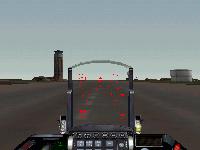
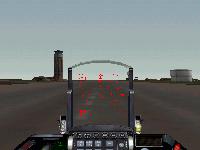
Characteristics of HUD Guidance...
If the HUD is designed as a supplemental use display system, it does not replace the requirement for standard Head Down
Display (HDD) of flight instrument data. The HUD is intended for use during takeoff, climb, cruise, descent, approach and
landing under day, night, VMC and IMC conditions. When it can be reasonably expected that the pilot will operate primarily
by reference to the HUD, it should be shown that the HUD is satisfactory for manually controlling the airplane and for
monitoring the performance of the FGS system.
During take off and landing during certain light and visibility conditions, HUD symbology can be extremely dominant in
comparison to external visual references. When visual references are relatively dim, extremely active symbology dynamics
and guidance cue gains can lead the pilot to make excessively strong corrections. It should be shown that if HUD guidance
cues are followed, regardless of the appearance of external visual references, they do not cause the pilot to take unsafe
actions. Generally the criteria for the mechanization of guidance displayed on the HUD would be no different than guidance
displayed on the head-down display.
However, unlike head-down displays, HUD’s are capable of displaying certain symbology conformal to the outside scene,
including guidance cues. Consequently, the range of motion of this conformal symbology, including the guidance, can present
certain challenges in rapidly changing and high crosswind conditions. In certain cases, the motion of the guidance and the
primary reference cue may be limited by the field of view. It must be shown that, in such cases, the guidance remains usable
and that there is a positive indication that it is no longer conformal with the outside scene. It must also be shown that there is
no interference between the indications of primary flight information and the flight guidance cues. In take off, approach, and
landing FGS modes, the flight guidance symbology should have priority.
Approach mode guidance, if provided, should be satisfactory throughout the intended range of conditions, including at the
minimum approach speed and maximum crosswind, with expected gust components, for which approval is sought. (Note: The
TAEIG report should say that the paragraph above should go into the flight test guide section of a future AC.HUD or in an
issue paper). Additionally, HUD guidance is often used in cases, like the low visibility approach, where the pilot will need
to reference both the information displayed on the HUD and outside references. Consequently, it must be shown that the
location and presentation of the HUD information does not distract the pilot or obscure the pilot’s outside view. For example,
it would be necessary for the pilot to track the guidance to the runway without having the view of runway references or
hazards along the flight path obscured by the HUD symbology.
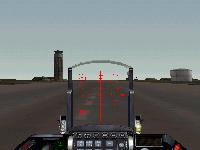
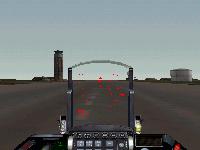
HUD Flight Guidance System Display...
The HUD display should present flight guidance information in a clear and unambiguous manner. Display clutter shall be
minimized. The HUD guidance symbology should not excessively interfere with pilots’ forward view, ability to visually
maneuver the airplane, acquire opposing traffic, and see the runway environment. Some flight guidance data elements are
essential or critical and should not be removed by any declutter function.
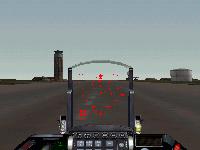
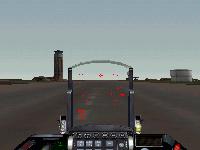
Head-Up/Head-Down Display Compatibility...
The HUD FGS symbology should be compatible and consistent with symbology on other FGS displays such as head-down
EFIS instruments. The FGS-related display parameters should be consistent to avoid misinterpretation of similar information,
but the display presentations need not be identical. The HUD and head-down primary flight display formats and data sources
need to be compatible to ensure that the same FGS-related information presented on both displays have the same intended
meaning.
While not all information displayed on the HUD is directly related to the FGS, the pilot is likely to use most of the displayed
information while using the HUD-displayed guidance and FGS annunciations. Therefore, when applicable, the guidelines
below for the presentation of FGS-related display information should be followed as much as possible. Certain deviations
from these guidelines may be appropriate due to conflict with other information display characteristics or requirements
unique to head-up displays. These may include minimization of display clutter, minimization of excessive symbol flashing,
and the presentation of certain information conformal to the outside scene. (a) Symbols should be the same format (e.g., a
triangle-shaped pointer head-down appears as a triangle pointer head-up; however, some differences in HUD symbology
such as the flight director “circle” versus head-down flight director “bars” or “wedge” have been found acceptable); (b)
Information (symbols) should appear approximately in the same general location relative to other information; (c)
Alphanumeric readouts should have the same resolution, units, and labeling (e.g., the command reference indication for
“vertical speed” should be displayed in the same foot-per-minute increments and labeled with the same characters as the
head-down displays); (d) Analog scales or dials should have the same range and dynamic operation (e.g., a Glideslope
Deviation Scale displayed head-up should have the same displayed range as the Glideslope Deviation Scale displayed
head-down, and the direction of movement should be consistent); (e) FGS modes (e.g. autopilot, flight director, autothrust)
and status state transitions should be displayed on the HUD, and except for the use of color, should be displayed using
consistent methods (e.g., the method used head-down to indicate a flight director mode transitioning from armed to captured
should also be used head-up); and (f) Information sources should be consistent between the HUD and the head-down displays
used by the same pilot. (g) When FGS command information (i.e., flight director commands) are displayed on the HUD in
addition to the head-down displays, the HUD depiction and guidance cue deviation “scaling” needs to be consistent with that
used on the head-down displays. This is intended to provide comparable pilot performance and workload when using either
head-up or head-down displays. (h) The same information concerning current HUD system mode, reference data, status state
transitions, and alert information that is displayed to the pilot flying on the HUD, should also be displayed to the pilot not
flying using consistent nomenclature to ensure unambiguous awareness of the HUD operation.
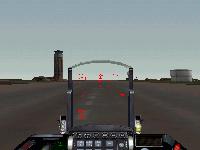
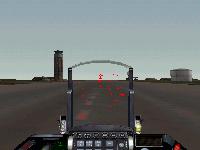
Alerting Issues...
Although HUD’s are typically not intended to be classified as integrated caution and warning systems, they may display
warnings, cautions, and advisories as part of their FGS function. In this regard, HUDs should provide the equivalent alerting
functionality as the head-down primary flight display(s). Warnings that require continued flight crew attention on the PFD
also should be presented on the HUD (e.g., TCAS, Windshear, and Ground Proximity Warning annunciations). If master
alerting indications are not provided within the peripheral field of view of the pilot while using the HUD, the HUD must
provide annunciations that inform the pilot of Caution and/or warning conditions. [ARP-5288, V12]
For monochrome HUD’s, appropriate use of attention-getting properties such as flashing, outline boxes, brightness, size,
and/or location are necessary to adequately compensate for the lack of color normally assigned to distinguish and call
attention to Cautions and warnings. For multi-color HUD’s, the use of red, amber, or yellow for symbols not related to
Caution and warning functions should be minimized, so that the effectiveness of distinguishing characteristics of true
warnings and cautions is not reduced.
Note: The TAEIG report should say the paragraph below should be moved to a future AC.HUD or an issue paper: As for
any color HUD, care must be taken that the interaction of the HUD colors and the background (i.e., out the window) color
of lights and terrain does not create confusion for the pilot. Real world color shift should not be misleading. Single HUD
installations rely on the fact that the non-flying pilot will monitor of head-down instruments and alerting systems, for failures
of systems, modes, and functions not associated with primary flight displays. Dual HUD installations require special consideration
for alerting systems. It must be assumed that both pilots will be head-up simultaneously, full, or part-time, especially when the
HUD is being used as the primary flight reference, or when the HUD is required equipment for the operation being conducted.
If master alerting indications are not provided within the peripheral field of view of each pilot while using the HUD, then each
HUD must provide annunciations that direct the pilot’s attention to head-down alerting displays. The types of information that
must trigger the HUD master alerting display are any Cautions or warnings not already duplicated on the HUD from head-down
primary displays, as well as any Caution level or warning level engine indications or system alerts.
Note: The objective is to not redirect attention of the pilot flying to other display when an immediate maneuver is required
(resolution advisory, windshear). If a Ground Proximity Warning System (GPWS), wind shear detection system, a wind
shear escape guidance system, or a Traffic alert and Collision Avoidance System (TCAS) are installed, then the guidance,
warnings and annunciations required to be a part of these systems, and normally required to be in the pilot’s primary field
of view, should be displayed on the HUD.
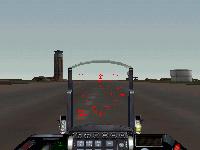
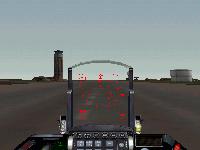
Upset/Unusual Attitude Recovery Guidance...
Upsets due to wake turbulence or other environmental conditions may result in near instantaneous excursions in pitch and
bank angles and a subsequent unusual attitude. If the HUD is designed to provide guidance for recovery from upsets or
unusual attitudes, recovery steering guidance commands should be distinct from, and not confused with, orientation symbology
such as horizon “pointers.” For example, a cue for left stick input should not be confused with a cue indicating direction to
the nearest horizon. Guidance should be removed if cues become invalid at extreme attitudes, such as zenith, nadir, or
inverted. For extreme attitudes it is acceptable to transition to the HDD, provided that the cues to transition from the HUD
are clear and unambiguous. If the HUD is designed to provide orientation only during upsets or unusual attitudes, cues must
be designed to prevent them from being mistaken as flight control input commands.













